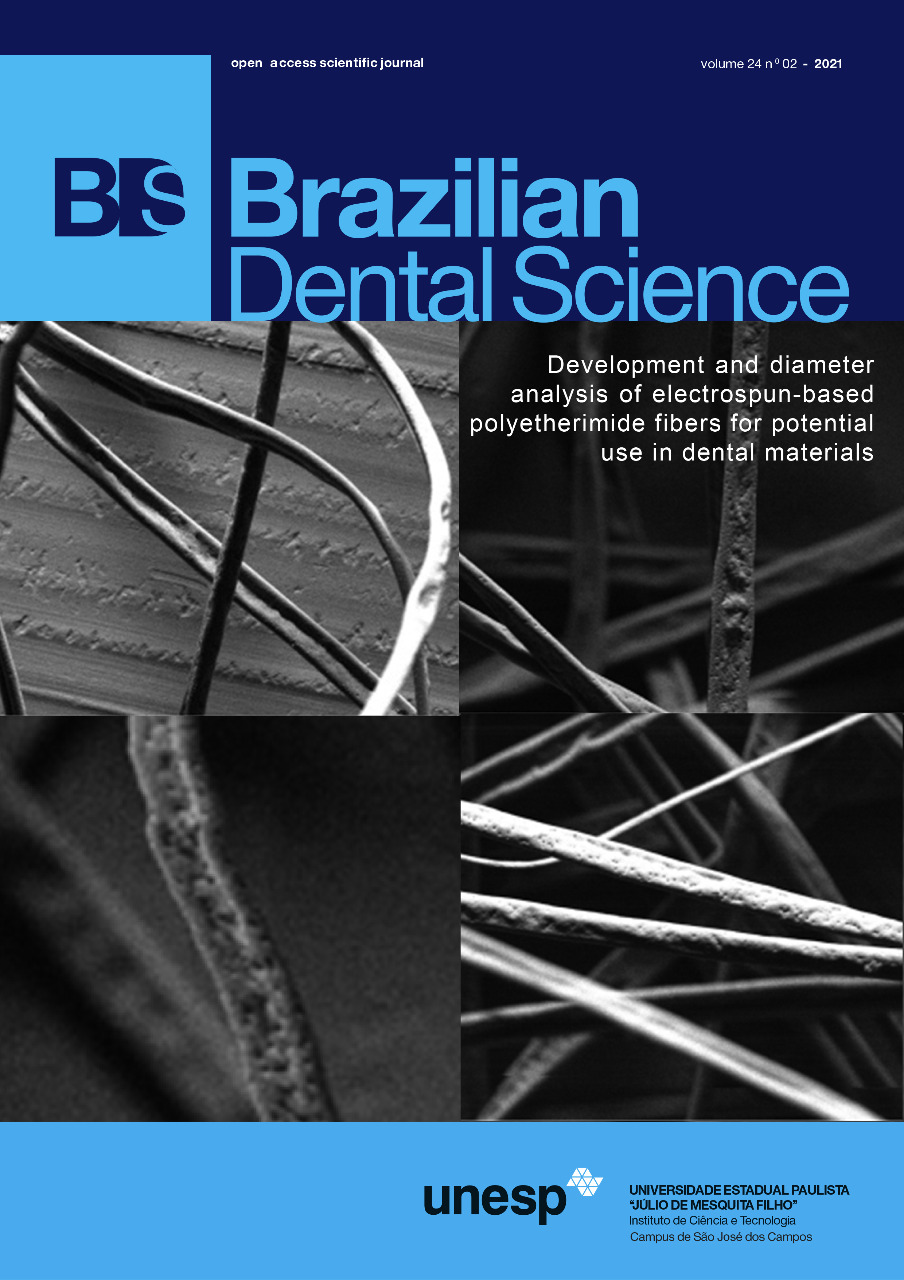Estimation of salivary ferritin in children with childhood caries – a cross sectional study
DOI:
https://doi.org/10.14295/bds.2021.v24i2.2143Abstract
Objective: Early childhood caries is the presence of dental caries in a child upto seventy one months of age. Saliva plays a major role in maintaining good oral health. The composition of saliva acts as a marker for oral health and the salivary proteins help in modulating the oral microflora in the oral cavity. Some salivary biomarkers help in detecting caries risk and can also predict their prognosis. Ferritin is one of the major biomarkers present in the saliva which acts as an iron binding protein and also as a monitoring tool in children suffering from iron deficiency. The ferritin levels are in increased in serum as well as in saliva to balance the deficiency of iron in the body. Material and methods: Sixty children were selected for the study aged between three to six years. The saliva sample was collected using standard spit method in a sterile container and Ferritin was tested in the samples by Chemiluminescence microparticle immunoassay(CMIA). Results: Salivary ferritin was found to be higher in the saliva of children with early childhood caries(mean value= 5.867) than in children without early childhood caries(mean value= 3.412). Conclusion: A direct association is present between salivary ferritin levels and dental caries. Increased level of ferritin is observed in children with Early childhood caries. Clinical relevance: The level of salivary ferritin is found to be raised in the present study in children with Early childhood caries. The exact mechanism is although not known it can be assumed that the children with early childhood caries might have deficiency of iron which has led to the increased amount of salivary ferritin in the saliva.
Keywords
Salivary ferritin; Early childhood caries; Salivary proteins; Saliva; Iron deficiency
Downloads
References
Hemadi AS, Huang R, Zhou Y, Zou J. Salivary proteins and microbiota as biomarkers for early childhood caries risk assessment. Int J Oral Sci. 2017 10;9(11):e1.
Çolak H, Dülgergil ÇT, Dalli M, Hamidi MM. Early childhood caries update: A review of causes, diagnoses, and treatments. J Nat Sci Biol Med. 2013;4(1):29–38.
Feldens CA, Giugliani ERJ, Duncan BB, Drachler M de L, Vítolo MR. Long-term effectiveness of a nutritional program in reducing early childhood caries: a randomized trial. Community Dent Oral Epidemiol. 2010 Aug;38(4):324–32.
Fan C, Wang W, Xu T, Zheng S. Risk factors of early childhood caries among children in Beijing: a case-control study. BMC Oral Health. 2016 Sep 17;16(1):98.
Stookey GK. The effect of saliva on dental caries. J Am Dent Assoc. 2008 May 1;139:11S–17S.
Jagannathan N, Thiruvengadam C, Ramani P, Premkumar P, Natesan A, Sherlin HJ. Salivary ferritin as a predictive marker of iron deficiency anemia in children. J Clin Pediatr Dent. 2012;37(1):25–30.
Giordani A, Haigle J, Leflon P, Risler A, Salmon S, Aubailly M, et al. Contrasting effects of excess ferritin expression on the iron-mediated oxidative stress induced by tert-butyl hydroperoxide or ultraviolet-A in human fibroblasts and keratinocytes. J Photochem Photobiol B. 2000 Jan;54(1):43–54.
Agarwal PK, Agarwal KN, Agarwal DK. Biochemical changes in saliva of malnourished children. Am J Clin Nutr. 1984 Feb;39(2):181–4.
Mazengo MC, Tenovuo J, Hausen H. Dental caries in relation to diet, saliva and cariogenic microorganisms in Tanzanians of selected age groups. Community Dent Oral Epidemiol. 1996 Jun;24(3):169–74.
Policy on early childhood caries(ECC) : Classifications,consequences, and preventive strategies . Pediatr Dent . 2008;30:40_3.
Tsai AI, Chen C-Y, Li L-A, Hsiang C-L, Hsu K-H. Risk indicators for early childhood caries in Taiwan. Community Dent Oral Epidemiol. 2006 Dec;34(6):437–45.
Mahantesha T, Reddy KP, Ellore VPK, Ramagoni NK, Iitagi V, Ks A. Evaluation and association of iron deficiency anemia with salivary pH and buffering capacity in children aged 6-12 years -. Natl J Physiol Pharm Pharmacol. 2014;4(3):229–32.
Killip S, Bennett JM, Chambers MD. Iron deficiency anemia. Am Fam Physician. 2007 Mar 1;75(5):671–8.
Lueangpiansamut J, Chatrchaiwiwatana S, Muktabhant B, Inthalohit W. Relationship between dental caries status, nutritional status, snack foods, and sugar-sweetened beverages consumption among primary schoolchildren grade 4-6 in Nongbua Khamsaen school, Na Klang district, Nongbua Lampoo Province, Thailand. J Med Assoc Thail Chotmaihet Thangphaet. 2012 Aug;95(8):1090–7.
Miguel JC, Bowen WH, Pearson SK. Effects of frequency of exposure to iron-sucrose on the incidence of dental caries in desalivated rats. Caries Res. 1997;31(3):238–43.
Jagannathan N, Neelakantan P, Ramani P, Premkumar P, Natesan A, Sherlin HJ. Salivary Ferritin–A Consice Update on Currengt Concepts. International Journal of Current Research and Review (IJCRR).
Downloads
Published
How to Cite
Issue
Section
License
Brazilian Dental Science uses the Creative Commons (CC-BY 4.0) license, thus preserving the integrity of articles in an open access environment. The journal allows the author to retain publishing rights without restrictions.
=================




























